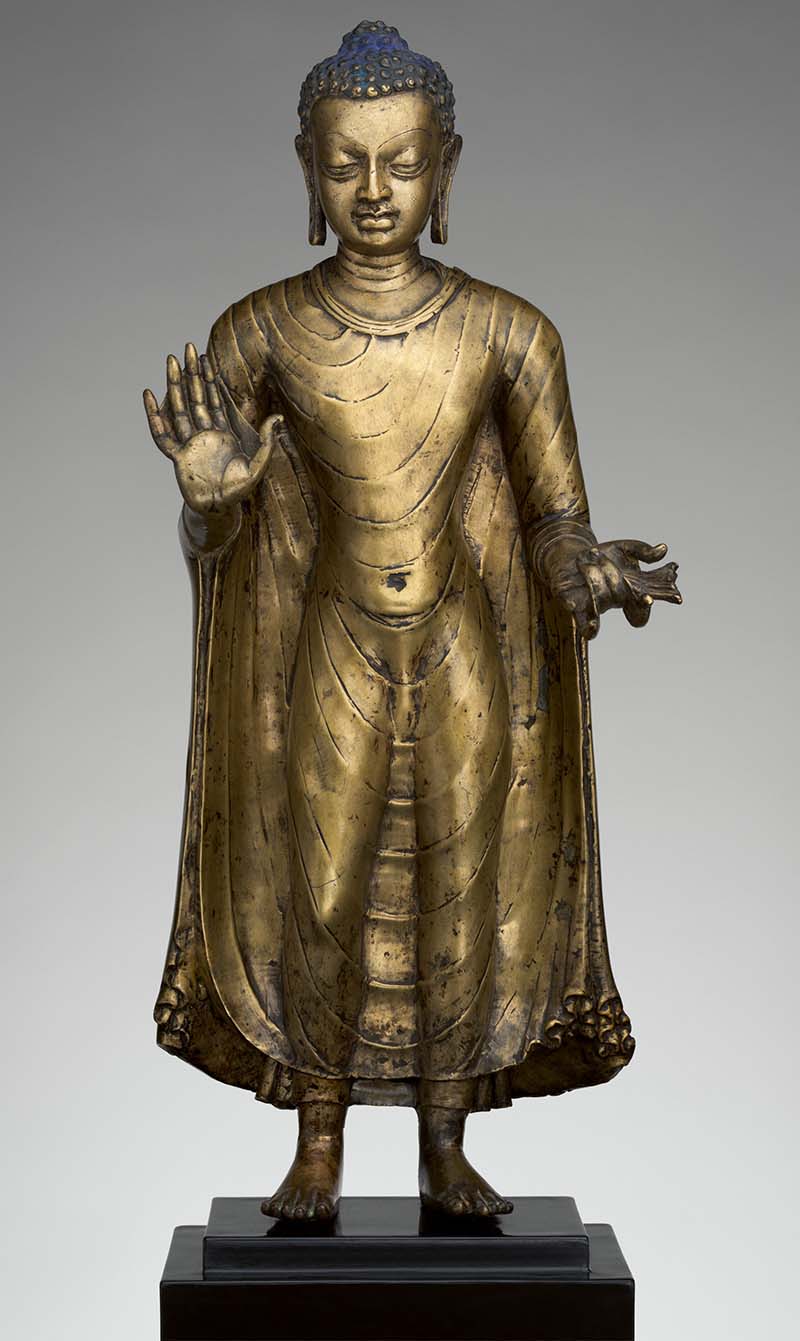A set of hand gestures and finger positions that serve as representational and symbolic devices in Buddhist art and practice, developing around the third century CE, mudras, mean “seals” or “signs” in Sanskrit. These gestures have been adapted in various spiritual and religious systems — such as in Hatha yoga, in Tantric panchamakara observances and as ear-ornaments for the Hindu Kanphata cult, for different interpretative purposes. In Buddhist visual culture, they serve primarily as a mode of expression of implicit or abstract concepts to the lay follower or practitioner, and also illustrate the key principles that were invoked during specific events from the Buddha’s life. After having come into systematic use following their integration into the Buddhist canon, mudras began to assume a variety of stylised forms as the religion itself spread across south and southeast Asia.
The origin of the use of mudras as expressive devices is neither datable nor ascribable. They are believed to signify the subtle manifestations of the Buddha’s states of realisation. The fingers of the hand are thought to represent the five factors that constitute the physical phenomena (elements), experiences, types of awareness and levels of consciousness entailed in attaining buddhahood, so that the various gestural configurations helped realise a synthesis of these factors. Likewise, the positioning of the hands is also imbued with symbolic qualities — the right hand representing the male principle of agency, or samsara, and the left representing the female principle of wisdom, or nirvana. The constant changing of gestures and hand movements during liturgical practices therefore allowed for a range of mental states to be achieved and meanings to be conveyed. The depiction of mudras in sculptural art came into prominence around the fourth and fifth centuries CE with their increasing appearance, such as in the Ajanta and Ellora caves, temples and monastic complexes, and their articulation in the texts of Mahayana Buddhism.
Of the large number of gestures that had subsequently evolved, the five most common hand gestures depicted became the focal mudras of Buddhism: they are the dharmachakra mudra, the bhumisparsha mudra, the varada mudra, the dhyana mudra, and the abhaya mudra. Also common in Buddhist iconography are the vitarka mudra, the bodhyagri mudra, vajrapradama mudra and the anjali mudra — all variations or derivations of the five main mudras.








